
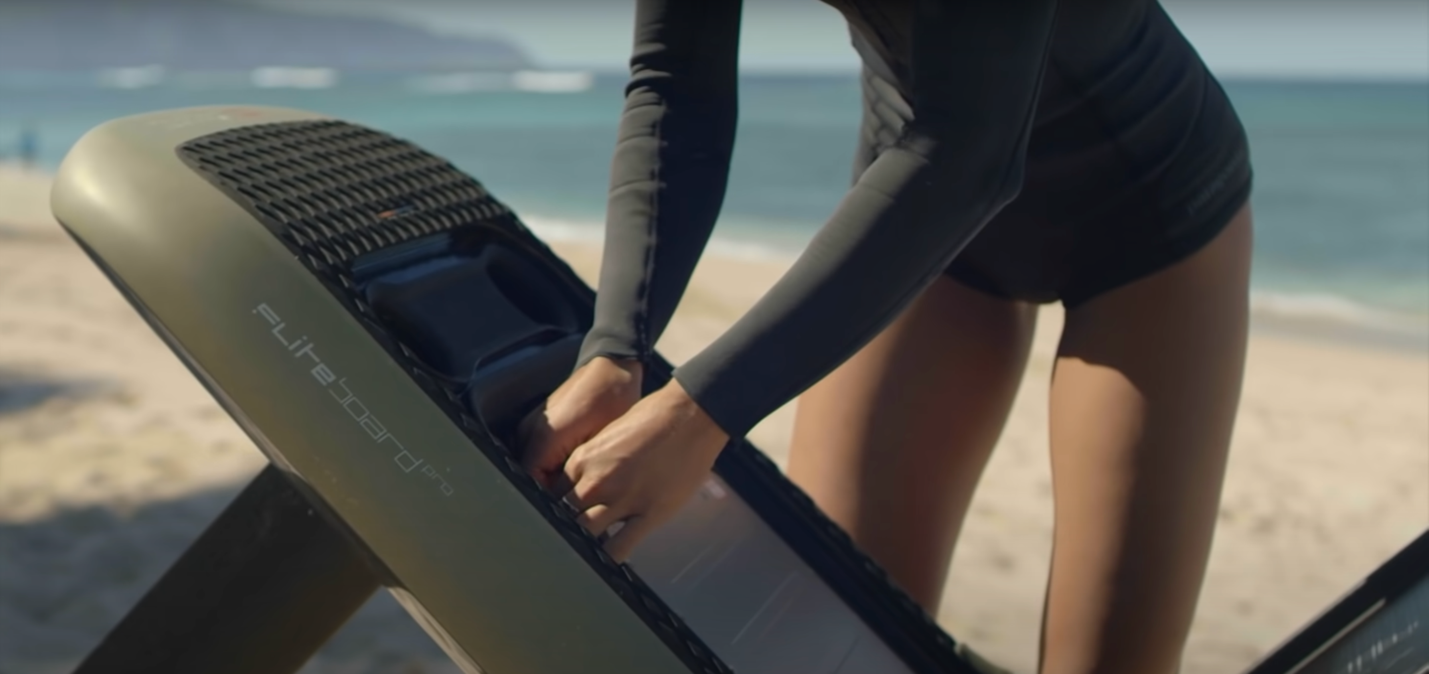
A guide to choosing the right fit, style, and thickness for eFoiling.
If you’re serious about eFoiling, then yeah, you probably need a wetsuit. They’re required for eFoilers stretching the season into colder months or those who need to keep the wind chill off on a summer morning; the right water wear means the difference between a good day and a short cold one. Like other watersports—surfing, kiteboarding, wingsurfing—eFoiling requires the right wetsuit fit and thickness to keep you comfortable.
You need the right gear if you’re pushing your limits and riding year-round. A wetsuit isn’t just about staying warm—it’s about riding longer, harder, and smarter when others are packing it in. The right wetsuit makes the difference between cutting a session short and staying out there shredding.
This blog is your guide to picking the best setup for your style, comfort, and climate. We’ll share everything you need to know. If we miss something, feel free to call or email us with your questions —or book a fliteboard rental panama city beach to talk to an expert.
This is your wetsuit crash course. Whether you’re trying to figure out if you need a wetsuit or just want to know how thick it should be, these are the most common questions—and we’ve got the answers. Think of this as your ultimate wetsuit guide for all things eFoiling.
Is There a Wetsuit Designed Specifically for eFoiling? No, eFoiling doesn’t require a special wetsuit. We recommend well-known, trusted wetsuit brands like O’Neill for their warmth, comfort, and durability. Keeping it simple is key—your wetsuit needs to keep you warm while offering a full range of motion. Some wetsuits designed for other water sports focus on wind resistance, which can make them more fragile. For example, a wind-focused wetsuit may have wind-resistant skin that can tear easily, while surf-specific suits are built to handle more wear and tear, such as laying on boards and getting roughed up.
Keep it simple—there is no need to overthink it. eFoiling is about staying light and flexible, not fighting bulky gear. Stick with wetsuits that are made to last—think surf suits that take a beating and keep you warm. When you’re eFoiling, you don’t want to deal with fragile seams or overly specialized gear.
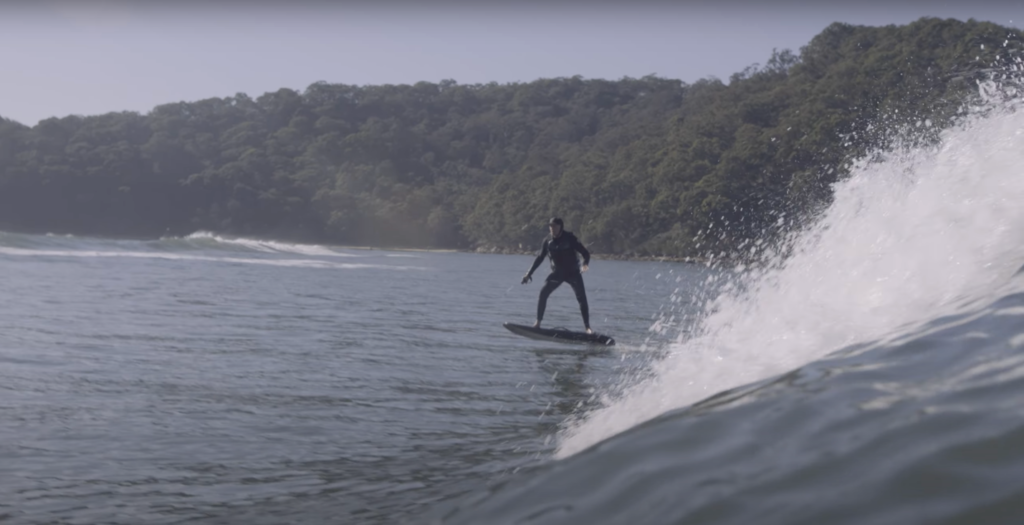
What Thickness Wetsuit Do I Need for eFoiling in Different Temperatures? Water temp is the deciding factor, but don’t forget about air temperature. Think about the 50/50 rule: if the air and water don’t add up to at least 100°F, then neoprene is a smart choice. I was once out riding in 60°F weather—the sun wasn’t out, and the water was around 60°F. With the wind chill, I was shivering after an hour. These are the conditions you might not think about, which is why having a “quiver” of wetsuits is key. Better to be warm and having fun than toughing it out and freezing.
If you’re heading into temperatures below 48°F, you need to consider thicker wetsuits (like 6mm or 7mm)
Toppers are the ultimate for summer flexibility. They keep you light, flexible, and free, plus they give you the sun protection you need. But if you’re looking for something with more warmth, a 3mm spring suit is our go-to for that perfect blend of—warmth, style, and mobility. When there’s a bite in the air, 4mm full suits keep you insulated without sacrificing flexibility. And if you’re a die-hard eFoiler, 5mm suits are a winter essential—keeping you out there when everyone else is calling it quits.
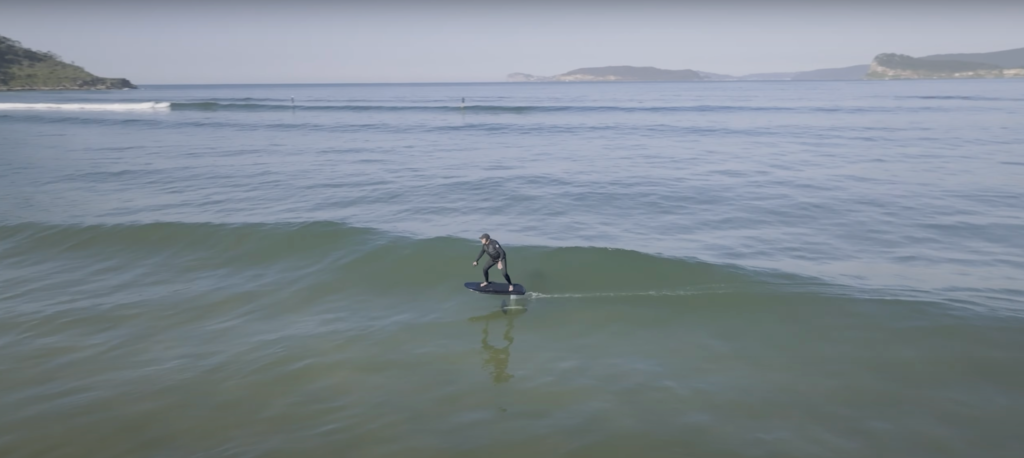
Which Wetsuit is Best for Cold Water eFoiling? For cold water like the 50s and 60s, you’re looking at a 5 mm full suit minimum. Brands like O’Neill offer great cold-water wetsuits with the right balance of warmth and flexibility. Don’t forget gloves, booties, and a hood if you’re really pushing into cold conditions.
When it’s cold, don’t mess around. Cold water ruins the fun fast if you’re not geared up right. Get yourself into a 5/3mm full suit or thicker if the water demands it. Add a thicker suit and accessories like gloves, a hood, and booties when the water dips under 50°F. Ride smarter, ride warmer.
Do I Really Need a Wetsuit for eFoiling in Cooler Weather? Yes, don’t be that person. Hypothermia is a real point of concern with watersports. Everything is fine until it’s not. Wearing Neoprene is not something regular beachgoers do, but when you’re spending lots of time in the water on an eFoil, the air rushing by evaporating the water from your skin does create a cooling effect. It’s epic on those hot days, but it does mean you will be colder when the temps start to drop.
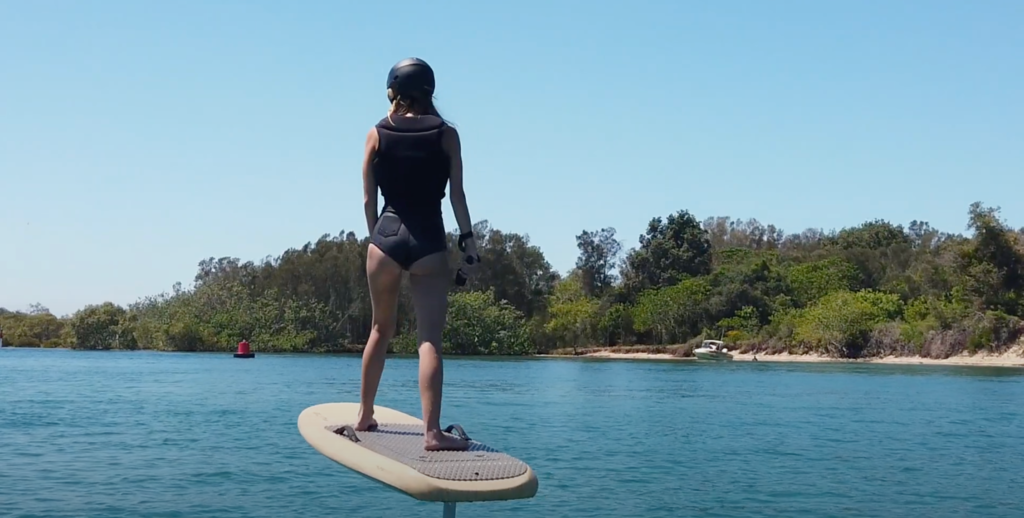
What Water Temperature Requires a Wetsuit for eFoiling? There is a subjective line and an objective line. The subjective line is how acclimated to the cold you are. Some riders will want neoprene on a warm summer day with a light breeze or if it’s overcast. Others might push it further, but objectively, you should consider a wetsuit if the air and water temperature don’t add up to 100º F. We recommend some protection when the air is below 70º. Comfort is king, and we would rather have a good time riding as long as possible. No one wants to stop riding early because they are cold.
Water temperature isn’t the only thing to think about. Wind can make it feel way colder. When in doubt, level up your gear to stay ahead of the chill. The right wetsuit lets you go harder for longer while everyone else is packing up.
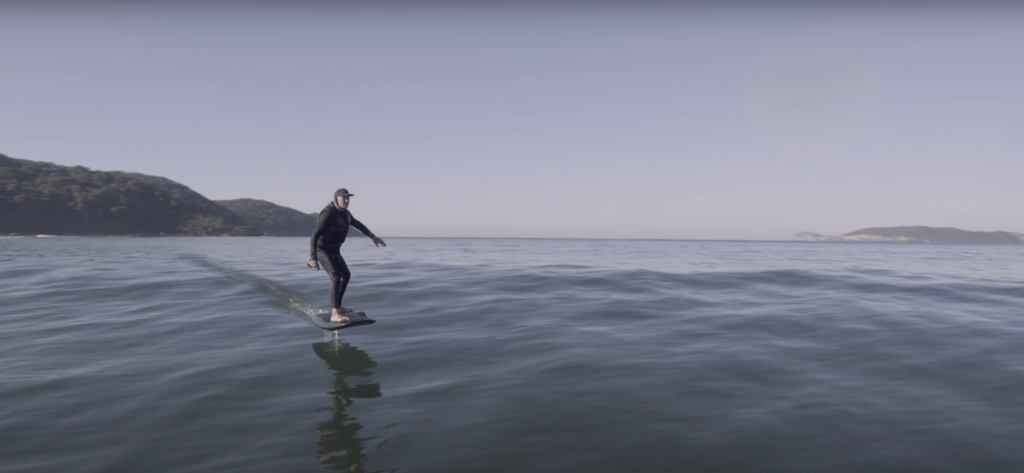
Definitely, especially if you’re eFoiling in cooler conditions or riding for extended sessions, wetsuits also protect you from scratches and abrasions while adding a bit of buoyancy to help with recovery after falls.
If you want to stay out longer and ride smarter, you’ll need a wetsuit. It’s about warmth and maxing out your session time without worrying about the chill. Wetsuits are your secret weapon for staying in control and on the water longer than anyone else.

O’Neill Imperial Wetsuit Size Chart
How Should a Wetsuit Fit?
Fit is everything! Wetsuits work by trapping a thin layer of water between your skin and the suit, which your body heats up to keep you warm. That’s why you want it snug—no gaps at the neck, wrists, or ankles—because cold water flushing in defeats the purpose. It should feel like a second skin, keeping that warm water layer intact while giving you full mobility.
A good wetsuit should move with you, not fight you. If it’s too loose, you’ll lose heat. If it’s too tight, you’ll feel like you’re in a straitjacket. Get the fit dialed in right so you’re warm, flexible, and ready to ride.
Full Wetsuit vs. Spring Suit
A full wetsuit gives you full-body coverage for cold temperatures. Spring suits (AKA Shorty)—with short sleeves and legs—are made for warmer conditions when you still want some protection from wind and water.
Spring suits give you flexibility in moderate temperatures, but when the water dips, you need the full-body coverage of a full suit. If you’re pushing into cooler temps, ditch the spring suit and gear up for full coverage.
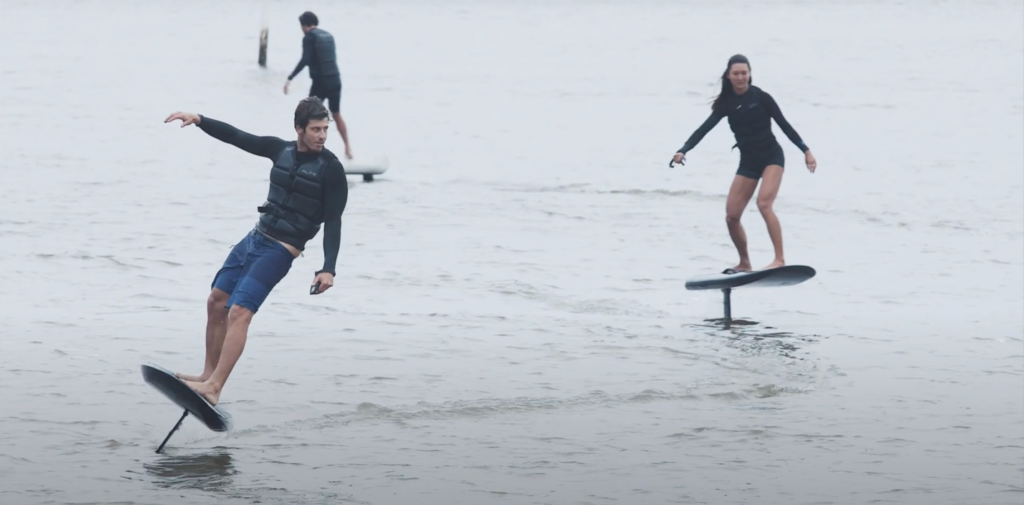
Absolutely. In warmer water, a neoprene top or spring suit will give you the protection you need from the wind and sun without causing you to overheat.
Warm water doesn’t mean you skip the wetsuit. Neoprene tops or spring suits give you extra protection from the wind and the sun while keeping you comfortable in the water. Don’t let your guard down just because the water feels warm.
Comfort is subjective. We know a rider from Key Largo who wears a full suit when it’s 75°F. He’s so used to that Florida heat that anything cooler feels cold. On the flip side, we know a rider from Michigan who rocks a shorty or neoprene top at 65°F. Everyone’s different, but stick to the recommended guidelines—hypothermia can sneak up on you fast.
It’s early morning, the sun’s just coming up, and the water’s glassy. You’ve got your Hyperfreak 1.5mm neoprene top on to ward off the chill. It’s warm enough for the brisk morning but light enough to handle the heat once the sun’s fully up. You’re first on the water, ready to shred before most people are even out of bed.
Nothing beats that early morning session—the world’s quiet and the water is yours. With your Hyperfreak top on, you’re prepped for the cool breeze and ready to take on the rising sun. It’s not just about staying warm; it’s about owning the moment.
When to Wear the Hyperfreak Chest Zip Spring Suit
It’s spring, and you’re extending your season. You zip up your Hyperfreak chest zip spring suit—it feels just right. Warm enough for the chill but flexible enough for a full day of riding. You feel it, the urge to shred! As you step onto the boat, the music’s kicking and your friends are chilling by the cooler. You head out to deeper water and dive in, ready to send it.
Spring sessions are about jumpstarting the season. With the Hyperfreak chest zip spring suit, you’ve got the right balance of warmth and flexibility. The suit feels like a second skin and the crew’s all set. Let’s get it.
It’s late fall, and most people are done for the season, but not you. Zipping up the Hyperfreak 4/3 chest zip, you’re ready for whatever the water throws at you. Cold or chilly water—it doesn’t matter. You’re suited up and charging ahead, owning the session while everyone else is packing it in. You’re out here because you’re built for it.
When the cold drives others away, you’re the one still on the water. The Hyperfreak 4/3 is your ticket to riding when the air bites. The water may be cold, but you’ve got the gear to stay warm and keep riding. You’re built differently, and your suit proves it.
February in northern Florida isn’t for the faint of heart, but you’re not backing down. The wind’s sharp, and the air’s cold, but inside your Hyperfreak 5/4 hooded wetsuit, it feels like summer. Hood up, gloves on, you’re ready to ride when most are still watching from the shore. You’re out here pushing limits, and with this suit, you’re unstoppable.
If you have any questions about wetsuits and need help deciding which is best for you, call 850-400-8500 or email us at [email protected] for a custom recommendation. We offer eFoil lessons, guided eFoil tours, eFoil demos, eFoil storage and delivery options, and more.
Please fill out this form and someone from our team will contact you as soon as possible. You can also reach us by email at [email protected]